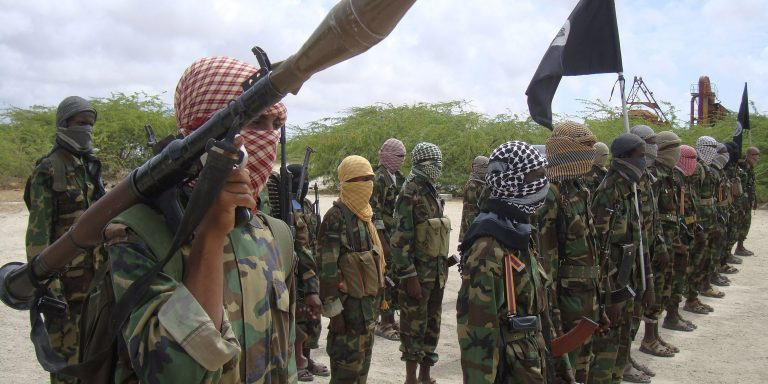
Bottom Line Up Front
Al-Qaeda’s franchise groups, affiliates, and regional branches have ebbed and flowed in strength, but at the moment, both al-Shabaab in Somalia and Jama’a Nusrat ul-Islam wa al-Muslimin (JNIM) in the Sahel are on the ascent.
Terrorist groups like the Islamic State Khorasan Province (ISKP) benefit from leveraging artificial intelligence to facilitate their propaganda, thus freeing up more bandwidth for militants to plan external operations.
It will soon be the rule, not the exception, that terrorists use emerging technologies in one or multiple aspects of the attack planning cycle.
The litany of challenges is occurring against a backdrop of budget cuts related to counterterrorism capacity, which could make the U.S. more vulnerable to a major terrorist attack on U.S. soil perpetrated by any number of hostile actors.
This past Monday marked the somber 20-year anniversary of the London 7/7 bombings, an attack orchestrated by four Britons motivated by al-Qaeda and Sunni jihadist propaganda. While al-Qaeda is now a shadow of its former self in many ways, it still remains a stubborn and persistent threat. Given the intelligence black hole that is Afghanistan, there is a paucity of reliable information on its presence there. Late last month, U.S. Congressman Bill Huizenga, chairman of the House Foreign Affairs Subcommittee on South and Central Asia, remarked that “Afghanistan has once again become a hotbed for terrorists looking for safe harbors as they grow their ranks and abilities to project attacks across the region and, frankly, the world.” Also last month, Immigration and Customs Enforcement (ICE) arrested a Tajikistan-born Russian national in Philadelphia as a foreign fugitive suspected of being a member of al-Qaeda. The United Nations Monitoring Team has noted that al-Qaeda has “maintained its ambition for external operations.”
Al-Qaeda’s franchise groups, affiliates, and regional branches have ebbed and flowed in strength, but at the moment, both al-Shabaab in Somalia and Jama’a Nusrat ul-Islam wa al-Muslimin (JNIM) in the Sahel are on the ascent. The Sahel is now a failed region comprised of fragile states and is, according to data from the Global Terrorism Index (GTI), the epicenter of terrorism as measured by incidents, fatalities, injuries, and hostages. Burkina Faso, Mali, Niger, Nigeria, Somalia, and Cameroon were all ranked by GTI in the top ten countries affected by terrorism. Slightly further down the list, all in the top 25, were the Democratic Republic of Congo (DRC), Mozambique, Kenya, Chad, and Togo. This was the fourth consecutive year that the Sahel was regarded as the most lethal theater in terms of deaths stemming from terrorist attacks. JNIM and Islamic State’s branches, Islamic State Sahel Province (ISSP) and Islamic State West Africa Province (ISWAP), continue to wreak havoc throughout the region.
Last year, Islamic State Khorasan Province (ISKP) conducted several high-profile terrorist attacks in Türkiye, Iran, and Russia, while numerous ISKP-related plots were disrupted in Europe, including one that targeted a Taylor Swift concert in Vienna, Austria. The first half of 2025 has been quiet for ISKP, but the group remains highly active online, and its propaganda still resonates and continues to motivate violent extremists and lone actors in the West. ISKP produces content in Pashto, Dari, Arabic, Urdu, Farsi, Uzbek, Tajik, Turkish, Hindi, Malayalam, Russian, English, and Uyghur and uses a diverse range of tech platforms to communicate, spread, and store its propaganda, including Telegram, Facebook, TikTok, Hoop, Element, Archive.org, etc. It is not unreasonable to fathom that ISKP and other IS branches are using generative artificial intelligence (AI) to pre-program dozens of propaganda channels uniquely tailored to resonate with the grievances of jihadist supporters in multiple countries simultaneously and at scale.
An enduring counterterrorism challenge is that even as old threats have evolved, adapted, and remained, new ones have emerged. This is occurring against a backdrop of what some have dubbed ‘counterterrorism fatigue,’ wherein, after two decades of fighting the global war on terrorism, elements of Western governments have shifted focus, personnel, and resources to other areas, including great power competition and AI. Yet, it remains crucial to not be complacent about the very real threat posed by terrorist groups from across the ideological spectrum, as well as lone actors and homegrown violent extremists. In addition to the challenge of global jihadist groups, the post-October 7 landscape also presents a host of new threats for law enforcement, security services, and intelligence agencies to grapple with, including the continued radicalization of individuals living in the West who have grievances stemming from Israel’s ongoing war in Gaza. This conflict has led to deep societal polarization. Even groups traditionally opposed to Hamas, including al-Qaeda and the Islamic State, have nevertheless sought to benefit from the conflict with Israel by lacing their propaganda with anti-Israeli themes and messages in an attempt to mobilize their followers and supporters to commit acts of violence throughout the globe.
While the international community is largely pleased with the collapse of the Assad regime, Syria still faces considerable uncertainty, and not all countries are sanguine about the foreign fighters who have been integrated into Syria’s armed forces. At the same time, although Iran and its Axis of Resistance have been significantly weakened, Tehran will inevitably seek to rebuild these forces and could turn to its comparative advantage, training and equipping its proxy forces — especially Lebanese Hezbollah — to conduct acts of terrorism. The past 21 months of warfare between Israel and Iran demonstrate the power that a terrorist attack can have in terms of sparking or catalyzing conventional warfare between nation-states. This occurred again in April with the Lashkar-e-Taiba front group attack in Kashmir, leading two nuclear-armed rivals — India and Pakistan — to the brink of war.
There is also a growing intersection between terrorism and cyber threats, with terrorist groups and hostile nation-states using the internet to destabilize societies through disinformation campaigns. This shift in how terrorism operates online, combined with the rise of disinformation, has created a volatile information environment that non-state actors use to exploit the vulnerabilities of social media platforms to radicalize and recruit new members. There has been an alarming spread of terrorist content online, and many platforms are failing to address this issue adequately. Moreover, terrorists are continuing to explore the use of various emerging technologies as force multipliers, including drones, AI, cryptocurrencies, encryption, and 3-D printing. The terrorist responsible for committing the New Orleans attack on New Year’s Day used Meta smart glasses for surveillance, while both the Tesla cyber truck bomber in Las Vegas and the teen implicated in a stabbing rampage in Finland used ChatGPT to aid their attacks. More recently, a Texas man used Roblox to plan an attack on a music festival, while an individual in California solicited the murder of federal officials on Telegram. It will soon be the rule, not the exception, that terrorists use emerging technologies in one or multiple aspects of the attack planning cycle.
The threat posed by transnational racially and ethnically motivated violent extremists (REMVEs) remains pernicious, with white supremacists and neo-Nazis spreading propaganda and conspiracy theories online and threatening a range of groups. Other trends include an uptick in left-wing violence and the use of social media platforms like TikTok to push young people to commit acts of terrorism. A range of other ideologies, including violent misogyny (so-called Incels), neo-Luddites and technophobes, extreme nihilism, and groups like Order of the Nine Angles (O9A) contribute various strands of their ideology to what former FBI Director Christopher Wray has dubbed ‘salad bar’ terrorism, or what others have called ideological convergence or composite violent extremism.
In the United States, drug cartels like Sinaloa and transnational criminal organizations like MS-13 have been legally designated as foreign terrorist organizations (FTOs), which means that already dwindling resources will be redirected toward those groups. Even though it is not listed as a formal state sponsor of terrorism, Russia’s hybrid activities — primarily, but not solely, in Europe — serve to destabilize democracies and highlight the devastation of the Kremlin’s ongoing war in Ukraine. All of this is taking place against a backdrop of budget cuts related to counterterrorism capacity, which could very well make the United States more vulnerable to a major terrorist attack on U.S. soil perpetrated by any number of hostile actors.
